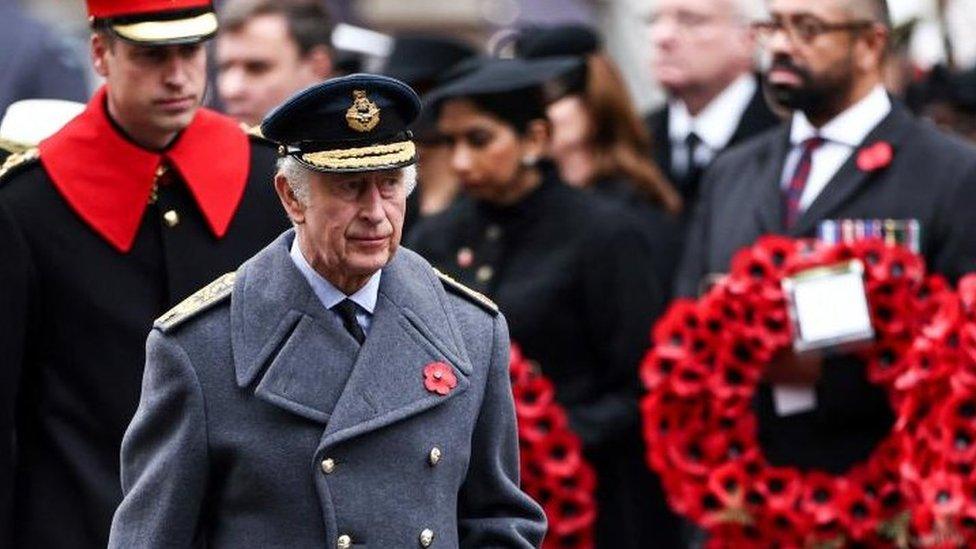Remembrance Day: King Charles leads wreath-laying on Whitehall
- Published
Watch: King Charles leads memorial service at Cenotaph
For one day a year the hustle and bustle of London's Whitehall - gawking tourists, chanting protestors and hooting taxis - is swept away and in its place a very different slice of Britain descends.
On Sunday came military veterans, lots of them, in blazers and berets, well-shined shoes and crisply-creased trousers, with nods to old comrades and regimental rivals.
Here were families making sure their loved ones were remembered and here were people who had come to see the spectacle, but also to pay their respects.
The crowd that lines Whitehall on these Remembrance Sundays does not all dress up for the occasion. But this is a Britain with Sunday-best manners, polite and orderly, this is a day of unity in divided times.
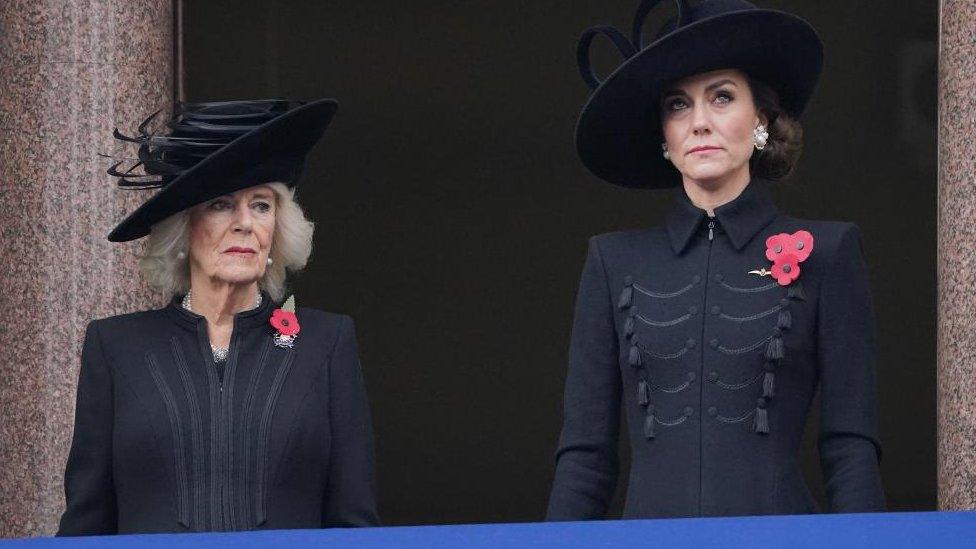
Queen Camilla and the Princess of Wales watch on as the Remembrance Sunday service takes place on Whitehall
The hinge of this day is the eleventh hour - that time on 11 November 1918 when four terrible years of slaughter came to end.
The two minutes' silence that falls after Big Ben sounds sees faces long with memory and grief, none more so than the King, a single poppy blazing out from the blue-grey lapel of his greatcoat.
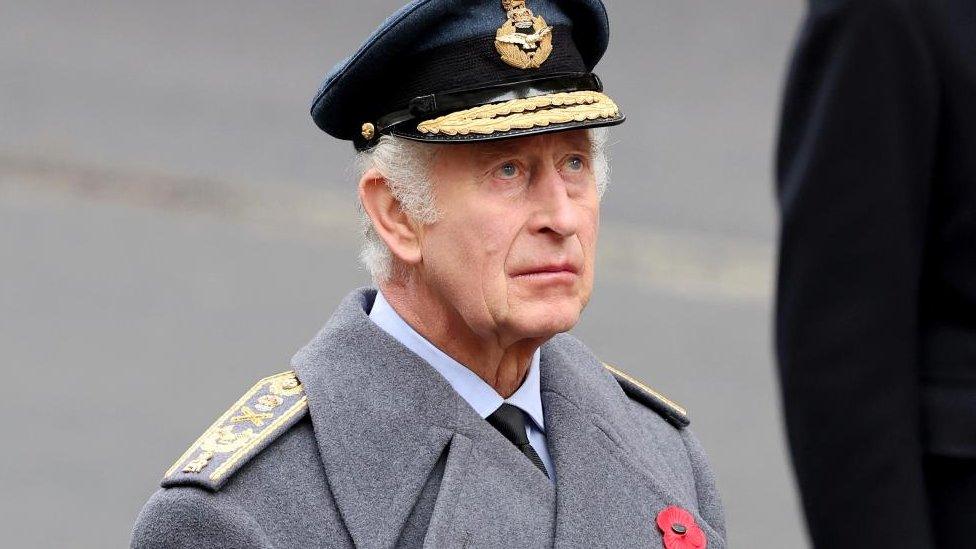
King Charles III led the National Service of Remembrance at the Cenotaph in central London
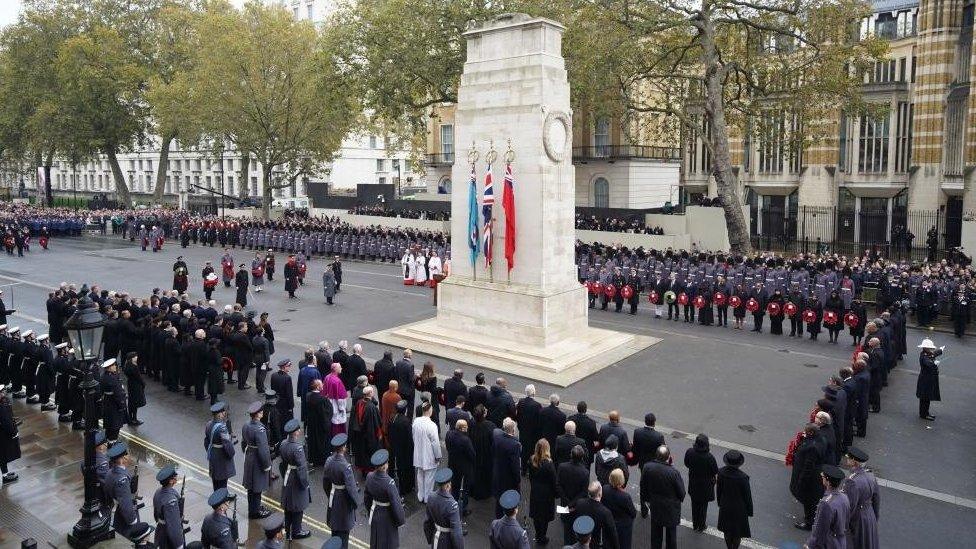
Massed Bands and Pipers assembled and played in the rain at the Cenotaph as members of the armed forces laid their wreaths
A command is barked into the thick cold air: "Stand at ease, stand easy." The troops settle a little.
And then begins the beating heart of the day, the parade of veterans, in berets and bowler hats, sometimes in wheelchairs and sometimes led by guide dogs.
Their march not quite as steady as it once was, but their pride shining out like the medals across their chests.
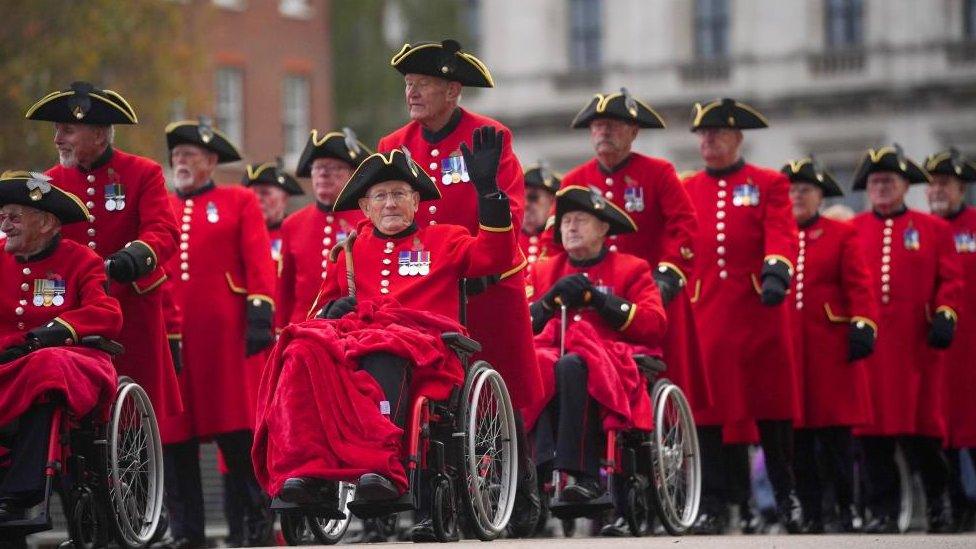
Veterans paraded past the Cenotaph
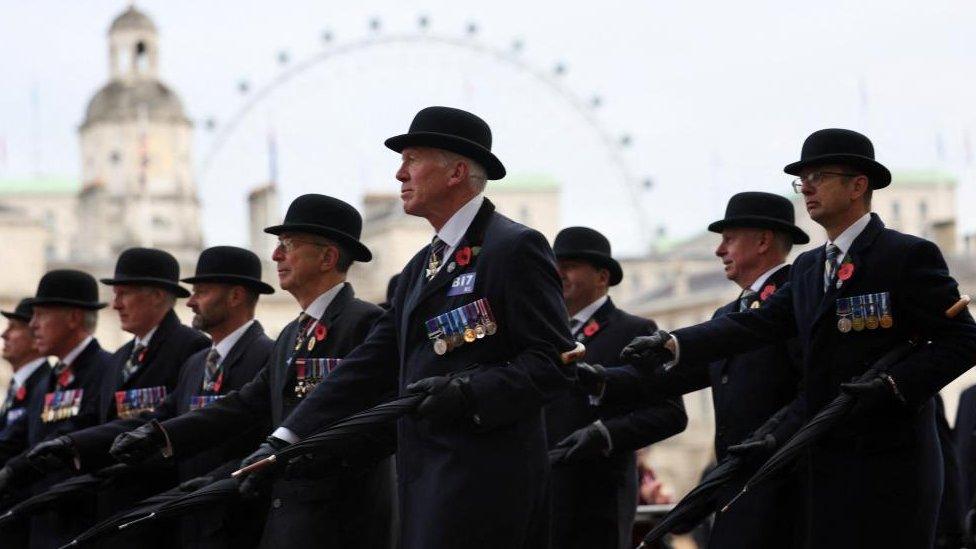
A two-minute silence was held at the service
As they pass the Cenotaph - Whitehall's 103-year-old war memorial - heads swing left in unison, some give a sharp salute.
And, as they pass, they yield up their ring of poppies, which is taken to the base of the Cenotaph and laid gently down, the ring of red around the simple monument gradually becoming a long carpet of remembrance.

Read the latest from our royal correspondent Sean Coughlan - sign up here.

Related topics
- Published12 November 2023
